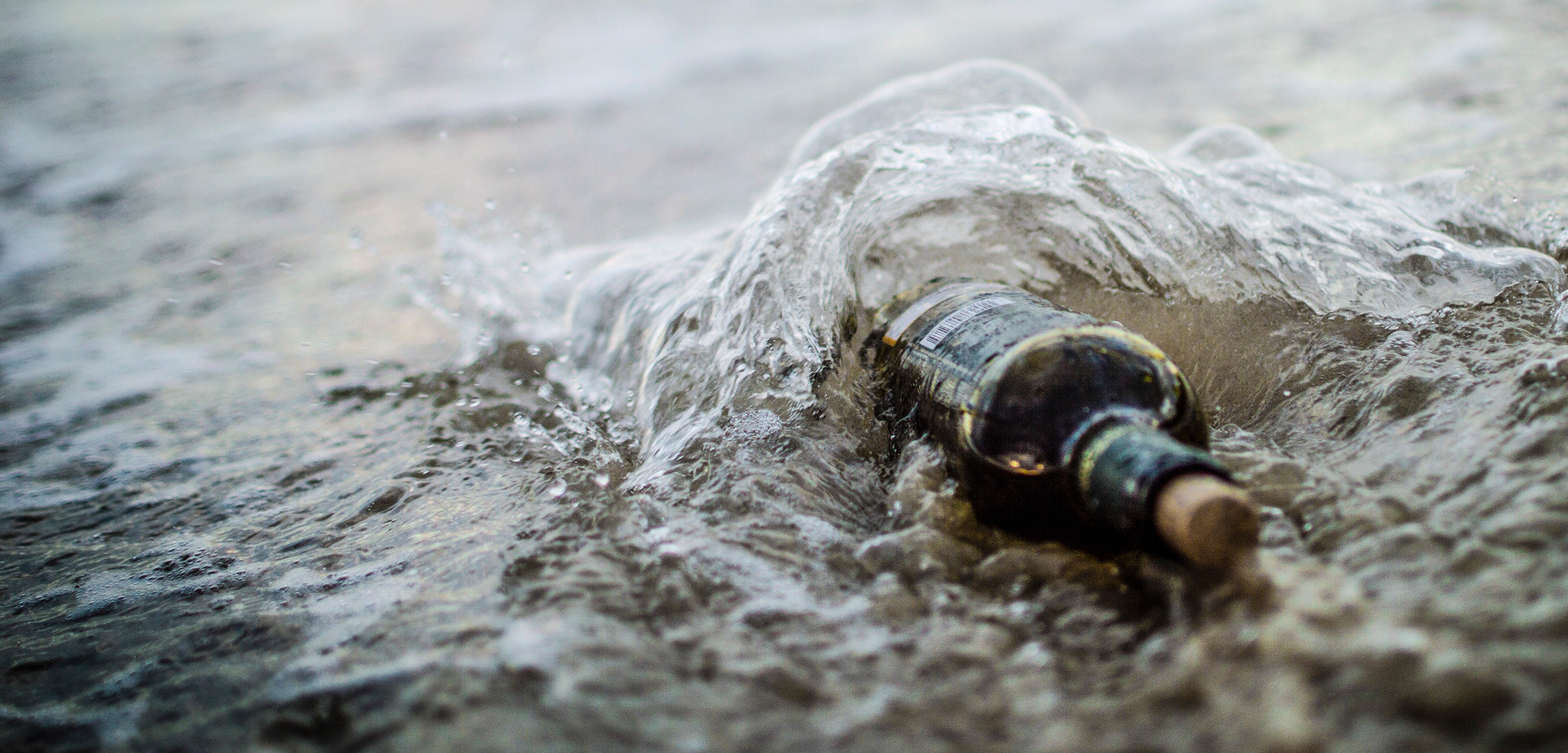Getting the Drift
Messages in bottles are not just good fun; they’re also good science.
Article body copy
Messages in bottles are the stuff of romantic tales: last goodbyes from shipwrecks, schoolchildren’s notes, and castaways’ scribbled instructions have all been found on beaches around the globe. Scientists are less known for their tendency to cast bottles, but they have done it with Sisyphean persistence to work out complex patterns of upwelling and flow in the world’s oceans. Casting a bottle from Point A and waiting for a note or email with details on where the bottle was retrieved has been a low-tech but highly effective part of science for centuries.
Benjamin Franklin’s Gulf Stream
In 1768, Benjamin Franklin observed commercial vessels beating government ships to Europe by about two weeks’ sailing time. With his cousin Timothy Folger, a whaler who knew of a great “river” of warm water used by whaling captains but not the Royal Navy (apparently “too wise to be counseled by simple American fishermen”), Franklin produced the first-known chart of the Gulf Stream flowing from Florida to the North Atlantic.
The United States Coast and Geodetic Survey (USC&GS) released drift bottles in 1846 in order to gather details about the Gulf Stream, including its movement, velocity, and seasonal variations. The bottles reached Kerry, Ireland, when dropped midstream near North America but only got as far as Nag’s Head, North Carolina, when tossed closer to shore. The USC&GS continued to employ drift technology until 1966, using bright pink cards designed to catch beachcombers’ attention.
More Than a Century at Sea
In April 2015, the record for the oldest-known message in a bottle was reset by the recovery of one released by marine biologist George Parker Bidder in the North Sea between 1904 and 1906. Inventor of the “bottom trailer”—a bottle designed to float just above the sea floor, where it was likely to get caught in fishing nets—Bidder cast a total of 1,020 bottles, which led to many discoveries. Bidder observed the ocean’s bottom-feeding species migrating in the opposite direction of his bottles’ drift and concluded that bottom feeders tend to move against the current. He also saw how localized currents were influenced by freshwater flows from rivers. Bidder’s design was used as well by Glaswegian sea captain C. Hunter Brown, who released some 1,890 bottom trailers into the North Sea beginning in 1910; 315 of the bottles were subsequently recovered, further adding to our understanding of the ocean floor.
Bottoms Up
The most prolific bottle tosser must be researcher Dean Bumpus (“Bump”) of Woods Hole Oceanographic Institution in Massachusetts. Between 1956 and 1972, Bump coordinated the release of more than 300,000 bottles off the east coast of the United States with a return rate of 10 percent. To add bottom studies to his mix, Bump deployed 75,000 seabed drifters—yellow plastic “jellyfish” that were returned 19 percent of the time. Always needing vessels, Bump put out a memo for “dead soldiers”: “Whiskey, rum, beer, wine, or champagne bottles will be used to make drift bottles. Any clean bottles—8 oz. to one quart in size—will be gratefully received. Bottoms Up!” On January 20, 2014, a Canadian fisheries biologist found Bump’s most recent return on Sable Island, Nova Scotia, 58 years and just over 480 kilometers from its release point.
Tossing Bottles, Connecting the World
“Drift bottle liberations” connect people all over the world with ocean-current research. In 2000, for instance, Eddy Carmack of Canada’s Institute of Ocean Sciences released 2,000 drift bottles on the west coast of Canada, around Alaska, and in the Arctic Ocean from the Royal Canadian Mounted Police vessel, St. Roch II. “I wanted to test the idea that there is a contiguous coastal flow around all of North America,” says Carmack. Participation rate was high so Carmack has continued deployments every year since, in what he calls his Little Project that Wouldn’t Die.
Carmack’s initial results show that freshwater runoff from land circles northern North America clockwise. The runoff links terrestrial and marine ecosystems, and its influence may become more prominent as permafrost thaw and ice melt increase with climate change. “Over 6,000 bottles have been launched in the studies,” says Carmack, “and many have crossed the Atlantic to northern Europe.” Results have shown how the Gulf Stream travels away from the North American shore and can act like a warm-water wall, inhibiting flow south to the subtropics.
Hitching a Ride
Recovering drift bottles takes time and sometimes detours, as in the case of T-8, a transponder in a plastic bottle dropped with 11 others off the Pacific Coast of Tōhoku, Japan, in January 2012 by scientists from Japan’s Tottori University for Environmental Studies and Sam Chan of Oregon State University’s Sea Grant Extension. Seeking to track patterns and rates of transoceanic debris travel following the March 11, 2011, earthquake and tsunami, Chan monitored T-8 as it drifted for three and a half years across the Pacific to the rugged coast of northwest Vancouver Island, British Columbia.
T-8 beached near Lawn Point Provincial Park in late June 2015, where a collector of marine debris spotted the unusual-looking orange bottle from afar and recovered it after nearly a two-hour hike. Chan and his colleagues were puzzled by the signals that followed, which came not from the coastline but from steep upland forests. “We honestly thought it might have been moved by a bear,” says Chan, but then T-8 took a turn and traveled seven hours via logging roads to Campbell River on the eastern side of the island. With assistance from the British Columbia Ministry of Environment, as well as citizens and the media, Chan’s investigative work led to the recovery of T-8 several days later. “That whole time, T-8 was still ‘talking’ to us,” he says. “Believe it or not, we think this is the first trans-Pacific bottle that’s been continuously monitored.”

